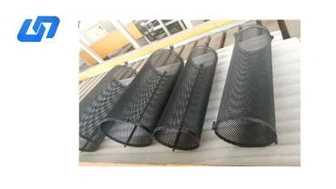
Titanium Electrodes For COD Degradation In Treatment Wastewater
Specification:
Substrate: Gr1/Ta1 pure titanium plate
Regular Size: 500*500*1.5mm
219*219*1.5mm
200*200*1.5mm
Coating type: Ru/Ir coating
Life span: more than 2 years.
Product Introduction
The Titanium electrode is a high virtue sheet of Titanium metal, slice to the size 5 x 3/4 inches (around 19mm x 125mm), and is by and large utilized as a Titanium terminal in power and science tests. Every electrode is stepped with letters "Ti" for simplicity of recognizable proof. Titanium electrodes range in thickness from about 0.5 mm to 1 mm. Titanium is a glistening progress metal with a silver tone, low thickness, and high strength. It is exceptionally impervious to erosion in seawater, water regia, and chlorine.
COD Degradation Used titanium electrodes
Titanium anode for treatment of high-concentration organic wastewater by electrolysis to degrade COD.
Specification:
Substrate: Gr1/Ta1 pure titanium plate
Regular Size:
500*500*1.5mm
219*219*1.5mm
200*200*1.5mm
Coating type: Ru/Ir coating
Life span: more than 2 years.
Details:
High-concentration organic wastewater generally refers to wastewater with high organic concentration and difficult to degrade in industries such as chemical wastewater, pharmaceutical wastewater, coking wastewater, textile/printing and dyeing wastewater and other industries. The organic matter concentration (COD) of this type of wastewater generally averages above 2000 mg/L.
At present, biological methods are mostly used to treat this type of wastewater. Judging from the actual application of these processes, there are mainly problems such as long process flow, large amount of added materials and high cost, which lead to higher unit water cost and unit water cost as a whole.
The core component of electrolysis treatment is a high catalytic activity precious metal oxide mmo coated anode plate, generally using titanium as the substrate. And according to the content and composition of the organic wastewater pollutants to be treated, different coating systems can be adjusted to achieve a good treatment effect.
Advantage:
The electrolysis method uses low-voltage direct current to treat this type of wastewater without adding additional redox agents, which avoids secondary pollution caused by additional chemicals.
The operation and equipment management are simple, the reaction conditions of the electrolytic cell are mild, and the stability of the effluent quality can be ensured by adjusting the voltage, current, and electrode spacing.
This method can be simply treated, and can be combined with other methods to treat the water quality that is difficult to degrade, thereby improving the biochemical performance of wastewater.
The device of the single electrolysis treatment system has a small footprint.
Hot Tags:
You Might Also Like
Send Inquiry






